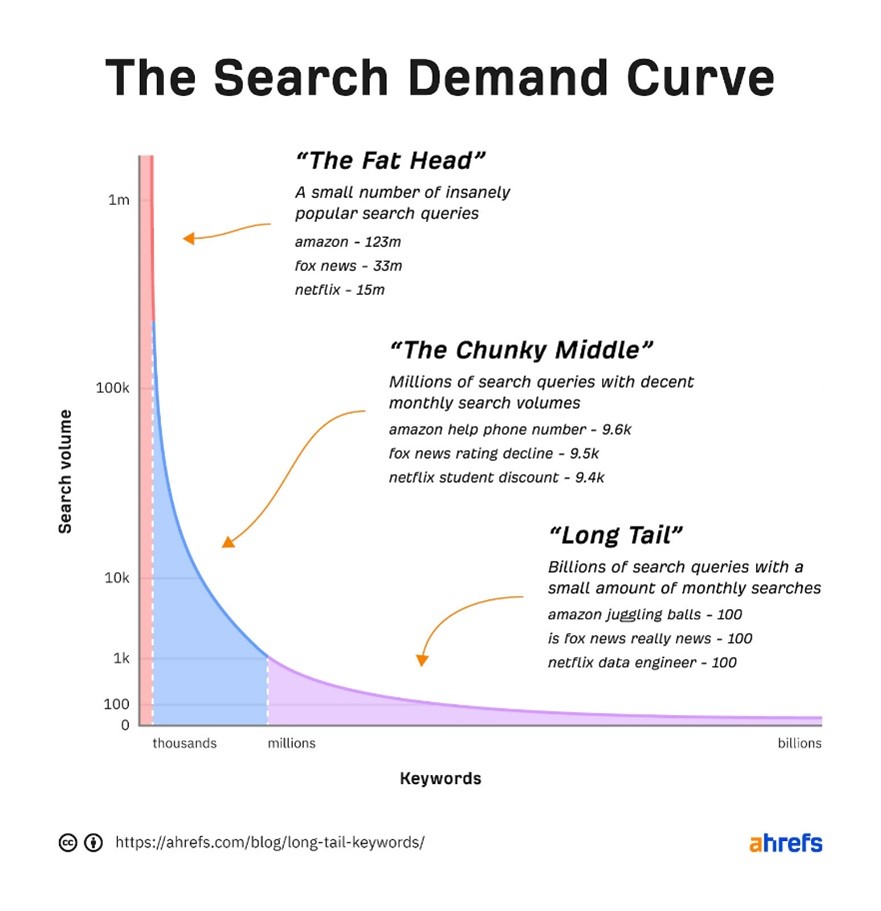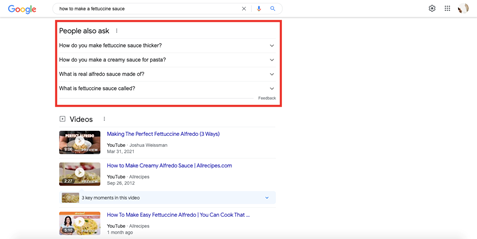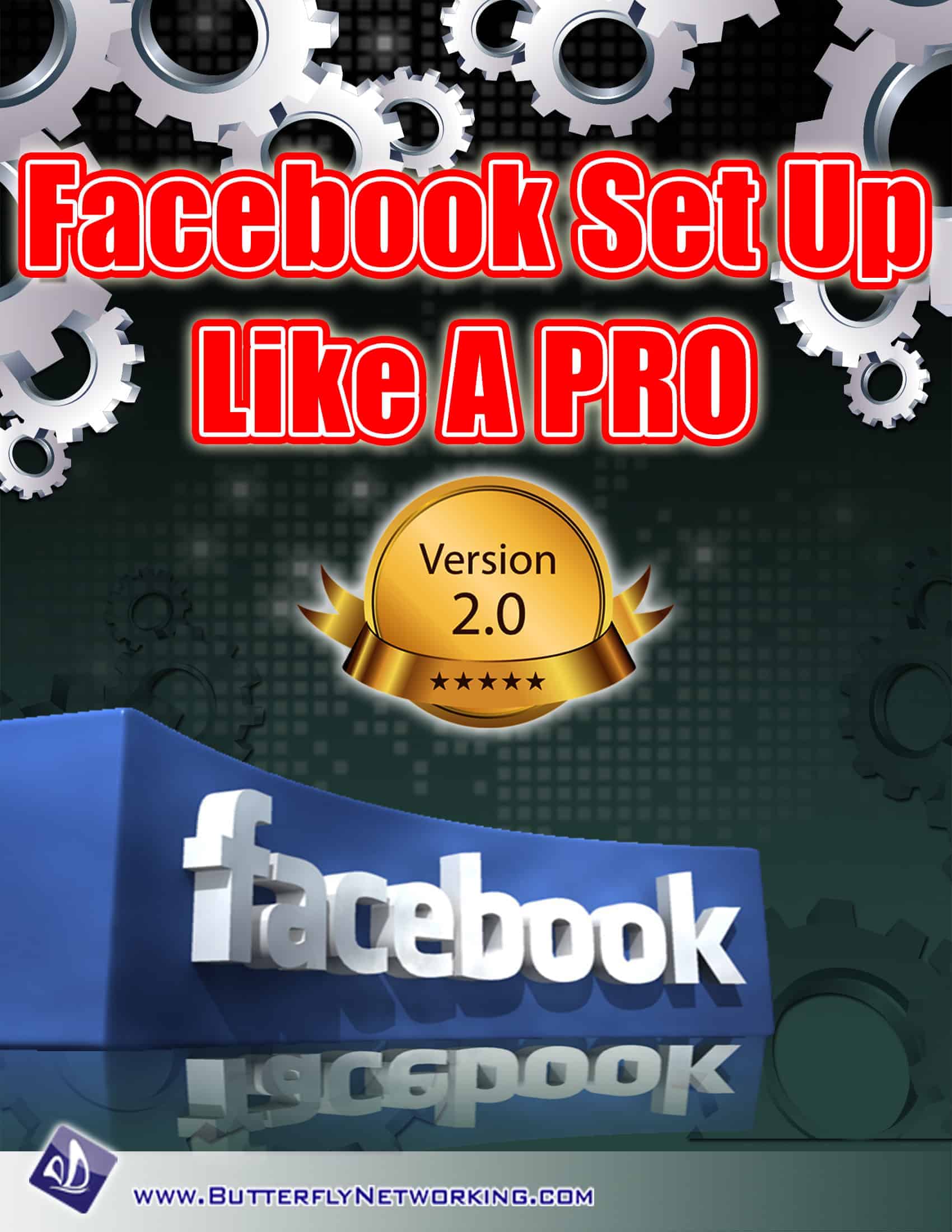Archive for Uncategorized
6 Old-School Techniques To Integrate Into Your Influencer Marketing
Posted by: | Comments6 Old-School Techniques To Integrate Into Your Influencer Marketing
 While you can use many software tools to help manage and scale influencer marketing programs, don’t forget to look back.
While you can use many software tools to help manage and scale influencer marketing programs, don’t forget to look back.
Old-school methods – alongside the tools – can mitigate the common pitfalls of influencer marketing. I asked six experts in the influencer arena for their best technique, and they went retro with their recommendations.
Let’s explore:
1. Influence through influencers
John Andrews, president, The Katadhin Company, says:
When we were starting Collective Bias (a shopper-focused influence marketing firm), we had a general rule: Someone on our team had to personally know the influencers we worked. This got harder as we grew, but we typically hired our influencers to manage our programs and influencer relationships. We called this approach influence by influencers.
Hire #influencers to manage your programs and influencer relationships, says @Katadhin via @SarahLParkerUK @CMIContent.Click To Tweet
The best part was we had a real understanding of the influencer process and virtually instant feedback when our business approach or messaging wasn’t connecting with their goals. We also implemented a hand-raising model where influencers chose the programs that were right for them. They knew their audiences better than any data set ever could. The analytics then built themselves as we measured the impact from campaign to campaign and captured the audience metrics along the way. Over time, we built a great understanding of what groups of influencers were the best for any given campaign.
2. Ask employees for their picks
Justin Levy, director of social and influencer marketing, Demandbase, says:
One of the best resources for influencer marketing is asking your employees who they find value from. When identifying someone as an influencer is often based on similar criteria, such as the number of followers, topic, location, etc., learning from your employees is even more important.
One of the best resources for #InfluencerMarketing is asking your employees who they find value from, says @justinlevy via @SarahLParkerUK @CMIContent.Click To Tweet
We are working on a campaign focused on the sales persona (sales leaders, account executives, sales development reps, sales ops, and rev ops). Beyond influencers with whom we already have relationships and newly researched influencers, I’m meeting with members of our sales team to find out who they follow and what communities they find valuable. It’s also important to focus on online communities where niche conversations are happening and who is leading these conversations.
3. Focus on the audiences
Rand Fishkin, founder, SparkToro, says:
Oddly enough, I actually don’t love the ‘influencer marketing’ model nor most influencer tools for two reasons:
- Traditional influencers are rarely followed for their product endorsements and rarely trusted for them either. If you’re a giant consumer brand seeking raw impressions, influencers can work fine, but if your goal is more targeted, it’s usually a mismatch.
- Almost every influencer marketing tool ranks results based on follower counts and the influencer’s self-described area of focus. But that’s not what brands should care about.
Instead, you should focus on whether the audience of a given person or publication is relevant to your message. Are these followers really the people you want to reach? And do they trust this source to give them information about this topic? This is why I’d rather be featured in a small email newsletter that reaches my target audience than go viral on TikTok or Instagram from a highly followed but irrelevant account.
Focus on whether the audience of a given #influencer or publication is relevant to your message, says @randfish via @SarahLParkerUK @CMIContent.Click To Tweet
4. Communicate
Johanna Voss, founder, Johannavoss.com, says:
The best influencer marketing tool for driving great outcomes is communication, luckily, it’s something we all have available to us. When an influencer is partnering with a brand/agency for a campaign, understanding the campaign’s goals is incredibly helpful so that the influencer can best figure out on their end what set of deliverables would achieve that goal.
The best #InfluencerMarketing tool for driving great outcomes is communication between the influencer and the brand, says @JohannaVoss via @SarahLParkerUK @CMIContent.Click To Tweet
Perhaps the campaign goals are app downloads or new user signups. For an influencer who does more education and brand awareness than conversions, it’s in their best interest to pass on the project versus committing and failing to meet expectations, leaving a bad taste in everyone’s mouth.
Conversely, if an influencer is great at converting and they know their winning combo of making that happen is through storytelling via Instagram stories and links to click, they can put together a scope of work to do just that.
From the first moment of connection between an agency/brand and an influencer/manager, asking questions from the talent side to get the full perspective of the project gets everyone on the same page from the get-go. Questions about timing, exclusivity, expectations, goals, and creative vision from the brand side and open-ended questions such as ‘Is there anything else I should know about this project?’ will be insightful and helpful to achieving the goals and knocking the campaign out of the park.
5. Be authentic
Hilary Thompson, off-page SEO and digital PR team lead, Portent, says:
Relying on one tool to attain success in influencer marketing is not ideal. The key to success is building relationships, and that can easily be done without complicated or expensive tools.
Email and Zoom have been our favorite platforms for building relationships and establishing trust. Nothing beats a face-to-face conversation, even a remote one.
The key to #InfluencerMarketing success is building relationships. You don’t need expensive tools, says Hilary Thompson of @portent via @SarahLParkerUK @CMIContent.Click To Tweet
Authenticity is the key to successful influencer partnerships, and when an influencer can meet you, exchange ideas, talk about the product or brand, and receive feedback directly about their integrations, there is a connection, a level of trust and authenticity, and engagement in each ad that is irreplaceable.
6. Do podcasts
Trevor Oldham, founder, Podcasting You, says:
The best influencer marketing tool for driving robust outcomes from collaboration comes from podcasting. This can be either hosting a podcast with guests or guesting on other people’s podcasts. Where else can you spend 30 minutes with someone where the only task at hand is to have a conversation?
The best #InfluencerMarketing tool for driving robust outcomes from collaboration comes from podcasting, says Trevor Oldham of Podcasting You via @SarahLParkerUK @CMIContent.Click To Tweet
From these conversations are built collaborations beyond your wildest dreams. If you do not have your own podcast or not guesting on other people’s podcasts, you are missing a gold mine of collaboration.
Make sure to integrate your old-school influencer tools
True influence doesn’t start with tools. It begins and ends with a network of influencers who drive valuable conversations within your chosen audience.
Some tech tools are necessary for scaling your influencer marketing strategy, especially around process, data, and content analysis. But never forget to integrate old-school “tools” into your influencer strategy. The goal of influencer marketing is always to get a return on the relationship.
via 6 Old-School Techniques To Integrate Into Your Influencer Marketing
How To Bring Big Word-of-Mouth Content to Your Marketing
Posted by: | CommentsHow To Bring Big Word-of-Mouth Content to Your Marketing
 Every customer has the potential to alter perceptions of your business positively or negatively. When handled proactively, their word-of-mouth influence can be a powerful tool for your content marketing team.
Every customer has the potential to alter perceptions of your business positively or negatively. When handled proactively, their word-of-mouth influence can be a powerful tool for your content marketing team.
Not only is word-of-mouth marketing much more cost-effective than paid strategies, it can produce a greater impact in the short and long term. Research from Kantar found that 93% of consumers say they trust their family and friends and 91% trust review sites for brand and service information. Advertising was at the bottom of the list – only 38% say they trust it.
90+% of consumers trust family, friends, and review sites for brand and service information, according to @Kantar via @CallRuby @CMIContent.Click To Tweet
Companies using authentic reviews and user-generated content from their customers in their content marketing tactics bolster their own reputation while expanding their customer base.
Here are four ways to incorporate word-of-mouth marketing into your content:
1. Feature relevant user-generated content
Done well, user-generated content can be perfectly authentic and make an impact. Reshare social shout-outs about your business. This is a low-effort way to draw attention to the public affection your business is garnering. But don’t stop there:
- Identify content that focuses on the service or product you provide. Look for content that shows the customer using or benefitting from your service or product. That type of “use-in-context” content can be invaluable.
- Elevate customer stories that involve your brand as a whole or your products/services. Follow up with customers who have shared their opinions publicly to see if they want to tell their stories in more detail. Make them the star of the story – let them do the explaining so that your brand doesn’t have to.
Resharing #social shout-outs about your business is a low-effort #ContentMarketing strategy, says @CallRuby via @CMIContent.Click To Tweet
TIP: Word-of-mouth content does not have to rely on lengthy reviews. Even a photo with a brief, positive caption can work.
Example: The Home Edit organizing brand, which has a Netflix show, created an Instagram post with this positive quote from Katherine Sivells: “Thanks to @TheHomeEdit, when I open a drawer or closet, I find myself saying, ‘We need to call Sumner.’ Then I realize it’s not “we,” it’s me and I don’t have Sumner’s number.”
2. Engage in real-time conversations
Your content marketing team should pay attention to customers’ social media posts even when they relate to customer service, not marketing. You can amplify the reach of customer feedback by engaging in the moment. Not to mention, responsiveness can quickly turn a negative into a positive when you can resolve or clarify a situation.
To join the conversation with customers, consider these strategies:
- Monitor mentions in real-time so you can join the conversation as it’s unfolding and address it if you want the conversation to end or propel the talk to keep it going. Customers value responsiveness highly – a HubSpot survey found that 90% rate an immediate response as important or very important when they have a customer service question.
- Thoughtfully insert yourself into the conversation. Whether a customer is putting out a call for help, asking a question, showing off your product, or talking about a great experience, engage authentically rather than hijacking the conversation. Answer the question, provide assistance, say thanks, and talk about why you love the product, too. If the natural opportunity is truly there, you may be able to share details about a new product or service.
- Sound like a person, not a company. Brands that do well in real-time conversations with customers are those that come across as a person, not a corporate brand. These conversations are not the time to sell your branded messaging. These are the opportunities to show off your personality, brand values, and commitment to your customers.
Example: Online pet supply company Chewy replied to a tweet from a customer remarking about their cat sitting in the small box rather than the bigger (Chewy-branded) box. They didn’t talk about their cat-related supplies or how to order and get a box. Instead, they responded with “You know what they say, if it fits I sits,” and a cat emoji.
You know what they say, if I fits I sits.
— Chewy (@Chewy) March 31, 2022
@Chewy is a brand that gets its #social voice right, replying to customers’ tweets with a personal voice, not a corporate brand, says @CallRuby via @CMIContent.Click To Tweet
3. Build stories around customer reviews
People are inspired to write reviews because of outstanding (or poor) service, and many customers won’t make a purchase without looking at reviews. So those stellar customer reviews you already have? Proudly use them in your content – with the permission of the customer.
- Find the reviews that most accurately describe your brand and what you do and build stories around them. Elevate across social channels, your blog, and your newsletter.
- Look for a customer with a specific problem or need that your company was able to solve. Add context to the review by sharing any behind-the-scenes work that went into solving the challenge.
- Convert standout quotes from customers into visual posts for social media.
- Turn multiple reviews into a content series by coupling together similar reviews to tell one story that demonstrates your company’s service consistency.
Example: Patagonia actively encourages customers who use its Worn Wear repair service to tell the stories behind their repaired garments. One customer writes about her Patagonia nano puff jacket. Within her colorful back story: “Sharp ends of yucca plants and prickly pear pierced tens of holes in the jacket, but it preserved through weeks in the desert, protecting me from sharp flora and chilly morning temperatures alike.”

Image source
Example: At my company, we used feedback from SensoryKidz, an occupational therapy business, for this Instagram post. The visualized quote – “I was doing five things at one time. When the phone rang, I had to go into therapist mode – even though I’m not a therapist – because families are anxious to get something done,” Mike said, jokingly adding, “we need more Mikes.” The accompanying caption went into more details about what SensoryKidz is and why its owners need our virtual receptionist services.
4. Create and share video testimonials
Customer videos can be a valuable asset in your content marketing strategy. Like other forms of word-of-mouth content, they can serve as a vetting source for potential customers. When done well, they deliver personal narratives where future customers can see themselves or their problems being solved. These videos also can be used in multiple ways:
- Feature full video testimonials on your company’s website. They can be paired with a brief write-up or as part of a larger case study.
- Share snippets of the video on social media with perfectly edited soundbites that feature how your brand delivers on expectations.
- Create a thematic blog post series around the content from these videos.
- Build your audience on YouTube (and other video streaming services). This content can then be leveraged in your search engine optimization and your Google My Business profile.
- Use in your email outreach.
via How To Bring Big Word-of-Mouth Content to Your Marketing
Think Outside the Search Box for SEO Keyword Opportunities
Posted by: | CommentsThink Outside the Search Box for SEO Keyword Opportunities
 Competing for popular keywords to win search engine rankings and attract clicks from searchers is a difficult, time-intensive process.
Competing for popular keywords to win search engine rankings and attract clicks from searchers is a difficult, time-intensive process.
Too often, that type of SEO is a losing proposition.
But you don’t need to give up. Instead, develop a keyword strategy that gives your brand a better chance of ranking on search engine result pages that attract your target audience. Explore keyword search volume, competition level, relevancy, etc., to find the right balance of elements, so your content earns higher rankings.
Don’t compete for popular keywords to win rankings. Play an #SEO game that gives you a better chance to rank big, says #DanBrunell via @CMIContent.Click To Tweet
Here are five actions to develop a keyword research process that delivers better results:
1. Prioritize potential keywords based on preferred factors
Many factors come into consideration when you contemplate whether to target a keyword. Some might weigh more heavily than others based on your site’s current conditions.
First, create a spreadsheet to list all potential keywords you want to rank for. Then, add columns for evaluation factors, including search volume, difficulty, and intent to understand the competitive landscape.
Several SEO tools can help you assess difficulty. This example comes from Ahrefs. It estimates how many backlinks your site would need to rank for your proposed keyword. It ranges from easy (fewer than 10 domains publishing a backlink) to super hard (over 200 domains backlinking to your site).

TIP: If geography is important to your brand, consider evaluating keywords based on country-specific data.
A spreadsheet gives you the flexibility to sort the data to weigh one factor over another. For example, you might sort the keywords by difficulty score rather than search volume. From there, you can prioritize your targeted keywords.
HANDPICKED RELATED CONTENT:
2. Consider the potential of long-tail keywords
Many content marketers ignore long-tail keywords because searchers don’t use them frequently. Ahrefs illustrates this conundrum in its Search Demand Curve chart, going from The Fat Head (small number of insanely popular search queries) to The Chunky Middle (millions of searches with decent monthly volumes) to Long Tail (billions of search queries with a small number of searchers).

That lack of interest in competing for long-tail keywords is just one of the benefits. These words also better indicate search intent, making those who click more likely to convert. You also can spend less time creating content because you’re targeting a narrower topic rather than attempting to be a comprehensive source.
Long-tail keywords are great for #SEO. There is less competition and searchers are more likely to be your target audience, says #DanBrunell via @CMIContent.Click To Tweet
3. Listen to the searchers
The People Also Ask and related search sections in search engines indicate topics related to the query. Use those results to identify alternative keywords that your search target audience might use.
In this tasty example, you can see the broad query – how to make a fettuccine sauce – becomes more specific in the People Also Ask section:
- How do you make a fettuccine sauce thicker?
- How do you make a creamy sauce for pasta?
- What is the real alfredo sauce made of?
- What is fettuccine sauce called?

In looking at these results, each searcher’s intent becomes clearer. The first topic – make fettuccine sauce thicker – likely would be an inquiry of someone who is cooking the dish. But the last – what is fettuccine sauce called – is more likely the search of someone who couldn’t remember the name Alfredo. The first listing’s keywords would be better targeted by a brand looking to help people cook.
Listen to what searchers are saying. Look at the People Also Ask and related search sections on search engine ranking pages, says #DanBrunell via @CMIContent.Click To Tweet
The same process works for the related searches section. In this case, you can see searchers who are looking for cooking-related tips (how to make alfredo sauce without cream) vs. those looking for products (best alfredo sauce in a jar).

While these sections can be helpful in understanding similar alternative keywords, they also can assist when developing your content. You can use some of those related search topics as subheadings in your content.
4. Examine your competitors’ place on SERPs
Do a search for your proposed keyword and see which sites own the top rankings. If you find popular websites ranking at the top, you might think the keyword competition is too high and cross it off your list.
However, before you do, check if the content really answers the targeted keyword. If the high-ranking content answers only part of the keyword phrase, you may have an opportunity to rank by creating quality content that tackles all or almost all of it.
For example, let’s say you want to target the “best 14-inch gaming laptop” keyword. Analyzing its competition on the SERP, you see popular websites (The Verge and PC Mag) are the top rankings.

You take a closer look at their content and realize they don’t satisfyingly answer the keyword search intent. Their content is about the best gaming laptops in general, not just about the 14-inch size. It might present an opportunity for your site to rank high by publishing content narrowly focused on the 14-inch aspect of the keyword phrase intent.
5. Take note of ‘out-of-reach’ keywords
A website’s authority likely influences search ranking results in some capacity. If your site doesn’t have a high authority now, it will be difficult to compete for some keywords.
Backlinko’s research, which uses Ahrefs authority ranking, illustrates this. Ranking positions closely correlate to the site’s domain rating. At least 75% of the top 10 ranking positions came from sites with domain ratings of 50 or higher.

At least 75% of the top 10 ranking positions came from sites with domain ratings of 50 or higher, according to @banklinko #research via #DanBrunell @CMIContent.Click To Tweet
While your site likely can’t compete now, you might be able to in the future. If you continuously implement an SEO strategy for your website, its authority should grow and become more prominent.
Thus, take note of the keywords for which you want to rank but would find too difficult now. As your domain authority grows, revisit this list of out-of-reach keywords to assess whether they’re within reach given your higher domain authority.
Look outside the box for SEO potential
Keyword research is essential for SEO. But you don’t always have to use the most popular or most often used keywords.
By looking outside the search box for related but less-tapped potential keywords, your site will be more likely to inch itself up in the rankings and be tops for your target audience.
via Think Outside the Search Box for SEO Keyword Opportunities
Back to the Basics: Create Content Like a Publisher
Posted by: | CommentsCreate Content Like a Publisher
 I’ve been talking about how content drives action and serves as the backbone of marketing for more than 20 years now. During that time, I’ve seen hundreds of people and organizations implement these strategies and they work.
I’ve been talking about how content drives action and serves as the backbone of marketing for more than 20 years now. During that time, I’ve seen hundreds of people and organizations implement these strategies and they work.
5 Steps To Find and Work With Quality Freelancers
Posted by: | Comments5 Steps To Find and Work With Quality Freelancers
5 Steps To Find and Work With Quality Freelancers
 Half of marketers say they outsource a content marketing activity. That’s not surprising given about 60% of B2B and B2C marketers operate content marketing teams with no more than five people.
Half of marketers say they outsource a content marketing activity. That’s not surprising given about 60% of B2B and B2C marketers operate content marketing teams with no more than five people.
Finding partners with adequate topical experience and who understand the brand’s audience are the most frequently cited challenges in CMI’s most recent research.
Half of #B2B and #B2C marketers say they outsource a #ContentMarketing activity, according to @CMIContent #research.Click To Tweet
To help you overcome those challenges and confidently hire top freelancers, I’ve put together this five-step guide based on my experience working with contract writers.
1. Establish an adequate budget
Before you start the search for writers, you should set a realistic budget.
You can’t simply take a full-time employee’s salary and divide by 40 to estimate a freelancer’s hourly rate. Given freelancers run their own business, they charge more. They have to calculate rates that encompass their expenses – both the employer and employee share of income tax, insurance, and operational costs such as computers, software, internet, etc. Their locale also could affect their rates.
You can’t set a #freelance hourly rate by simply dividing an employee’s weekly compensation by 40, says @emanuelp986 via @CMIContent. #ContentMarketingClick To Tweet
If you’re challenged with finding writers who have sufficient topical experience, budget to pay the higher rates more experienced writers charge. It’s better to have a writer produce a top-notch piece within one or two attempts than to hire a cheaper writer and make multiple corrections.
If you’re challenged with finding writers who have sufficient topical experience, budget to pay the higher rates experienced writers charge, says @emanuelp986 via @CMIContent. #ContentWriting #FreelanceClick To Tweet
You should also decide on a budget based on the expected deliverables. The more labor and research-intensive the project, the higher the budget should be.
Rates vary dramatically based on the individual as well as the industry. To calculate your budget, ask peers in your industry what they pay. Look to freelance associations and organizations for benchmark studies.
While a budget sets expectations on how much you can pay the writer, it isn’t the predictor of how successful the relationship will be. That’s why you need to follow the next steps.
2. Create the perfect help-wanted post
Freelance writers carefully read help-wanted posts to assess whether it’s a good opportunity and fit for them. Your listing should clearly explain your expectations and deliverables to attract more qualified responses and accurate proposals.
But just because you’re contracting to work with someone doesn’t mean you need a complete job description as you would with a full-time employee. Among the relevant details to include:
- Assignment description, including what information will be provided by the company and what information the writer is expected to find.
- Specify any special knowledge or skills needed
- Expected deliverables, including length estimate
- Start and end dates, including interim deadlines
- Compensation range with terms like hourly rates or fixed prices as well as invoice payment timing
It helps to add some personality to your listing as it gives the freelancer an idea of what it would be like to work with you. And most importantly, don’t hesitate to ask additional questions you deem necessary to find the ideal candidate for your work.
Add some personality to your #freelance help-wanted listings to give an idea of what it’s like to work with your brand, says @emanuelp986 via @CMIContent. #ContentWritingClick To Tweet
TIP: To assess how well they follow instructions, include a small “test” such as, “Please put the word ‘freelancer’ in your subject line.”
ADVERTISEMENT
Definitive Guide to Content Operations
Get a deep dive into Content Operations: what it is, why it’s so important for organizations in every industry to embrace, what it’s capable of, and how you can build the best content operations solution for your teams. Download now.
3. Locate the best writer for your brand
It’s so much easier these days to reach out and find quality writers for your task or project. Among the options:
- Ask your professional and personal network for referrals. Their input is invaluable because they already have a familiarity with or have worked with the suggested writers. Those word-of-mouth referrals give the candidates an added boost from the beginning.
- Turn to job boards. While many writers search job boards for permanent gigs, part-time writers also use them to find work. Make it clear in your listing that you’re seeking someone for part-time work.
- Post on social media. Post the opportunity to Instagram and Twitter, and use industry-relevant hashtags as well as #Freelance. Posting to relevant social media groups also can be a great way to reach writers in a specific niche.
- Go to freelance sites. Use platforms, such as Contently, Skyword, ClearVoice, etc. These outlets facilitate finding, hiring, and paying writers. Most of the platforms help you quickly find better quality content creators who produce optimal quality work in your niche or for the content type you want created. (I recently hired a writer who specialized exclusively in the privacy policy and terms of use pages.)
Go to #freelance sites such as @contently, @skyword, and @clearvoice to find quality #content creators for your brand, says @emanuelp986 via @CMIContent. #ContentWritingClick To Tweet
TIP: Create an authentic and engaging profile on freelance sites to show your brand’s personality and culture that will attract writers who are interested in that environment.
TIP: If you hire a writer who only freelances part-time, recognize it may take them longer to complete the work than if they worked a full-time freelance writing schedule.
4. Evaluate the writing candidates
First, you should shortlist your options. You can then ignore responses that didn’t pass your test, such as including “freelance” in the subject line. Then, go through the remaining responses and eliminate those who don’t meet the basic requirements.
Freelance platforms also help you find qualified wordsmiths by filtering them based on specific prerequisites and only invite qualified writers to respond to your listing.
With your shortlist identified, conduct a video interview. I do this with every writing opportunity. While phone interviews can work, I find it easier to interact with a person on video.
During the interview, ask them questions to reveal:
- Their professional background and expertise in areas important to your work (i.e., SEO, headline writing)
- Their experience in your niche and with your content type(s)
- How they approach writing assignments such as the ones you would assign
- How they handle meeting deadlines when they are working on multiple projects
- How they respond to unforeseen obstacles, such as an interviewee that doesn’t respond or an unexpected power outage
TIP: Asking for narrative examples sometimes can better help you understand the candidate’s thought process.
If you have a standout candidate, you can proceed to the next step. If you’ve narrowed the search to two or three candidates, ask them to complete a small paid project related to your topic. Then, you can compare and gauge each writer’s ability, from understanding the assignment to executing the content.
Ask the 2 or 3 finalist #freelance candidates to complete a relevant paid assignment to gauge their ability, says @emanuelp986 via @CMIContent. #ContentWritingClick To Tweet
5. Hiring the freelance writer
Once you select the freelance writer to hire, it’s time to detail what you want them to do.
There is a marked difference in hiring a freelancer over an employee. While you tell employees what they have to do and how they have to do it, you can’t give the same instructions to freelancers. They control that.
With freelancers, you should be clear about the criteria, including start date, detailed scope of work, deliverables, payment terms, etc. All these details should be included in a contract, which safeguards your business and the writer, and can help prove to the IRS that the writer is a contractor, not an employee.
A detailed, clear, and concise contract includes:
- Names, contact information
- Exact assignment requirements with deliverables
- Deadlines, including milestones
- Payment terms
- Owner of the completed work
- Confidential information clause
- Limitation of liability
- Freelance copywriter terms and responsibilities
- Indemnity clauses
Don’t begin the working relationship until both parties have signed the contract, and you’ve paid any deposits as required.
TIP: To help your writer onboard more quickly, share examples and documents of similar work so they can better understand your expectations.
TIP: Make sure the writer can access any servers or platforms necessary for their work. It will improve their productivity from the beginning.
HANDPICKED RELATED CONTENT:
Expand your team with freelancers
The process of hiring freelance writers is similar to hiring an employee. You need to know what you want, explain it well in a help-wanted listing, narrow down the candidates, conduct an interview, and then engage your preferred choice.
However, you also need to respect the transactional nature of the relationship. While you can’t control how they do the work, you should spell out exactly what they are to deliver in the formats you prefer and on the schedule you set.
By following this process, you’re more likely to find valuable talent that can help your content marketing team deliver results for your brand.
via 5 Steps To Find and Work With Quality Freelancers












